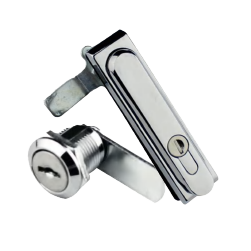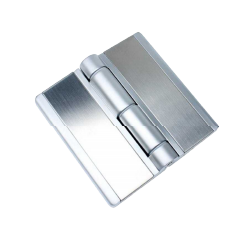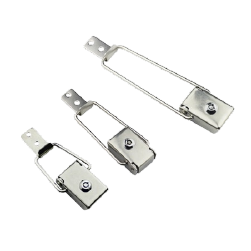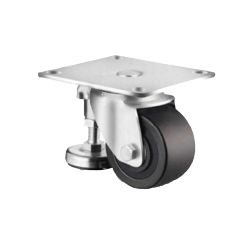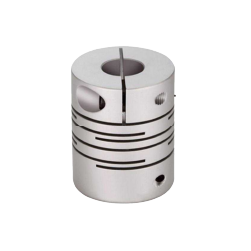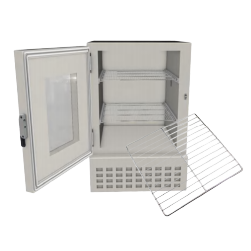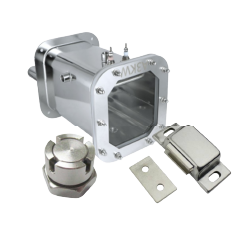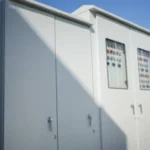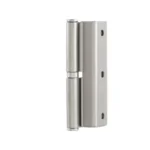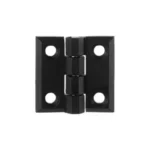Within the enormous vocabulary of design and engineering, some parts work in silent subservience to the whole. Among the many types of hinges available, they do their job perfectly, but are completely invisible; their success is gauged by their own invisibility. The concealed hinge, sometimes called an invisible hinge, is the prototype of this principle. It is not just cabinet hardware; it is the silent protector of clean lines, the facilitator of the smooth appearance so valued in contemporary design, and the invisible hinge upon which both form and functionality rely in any piece of furniture or industrial panel.
This guide will take us through its world, giving us a definitive knowledge of its types, specifications, and selection.
What is a Concealed Hinge?
In its essence, a concealed hinge is what it is not: visible. The hinge mechanism is completely concealed when the door or panel is in the closed position, offering a sleek, seamless appearance. This is in sharp contrast to conventional forms of hinges, such as butt hinges, strap hinges, or piano hinges, where the knuckles and leaves are exposed and become external hardware of the object. The concealed hinge enables very clean external surfaces, minimal gaps, and a modern, uninterrupted look by moving the entire pivot mechanism to the inside of a cabinet or enclosure.
This law of invisibility, however, conceals an internal complexity of a high order. These are not ordinary pivots, but systems that are engineered to regulate the movement of a door in a precise manner. They are used in everything as common as a kitchen cabinet to the heavy gasket-sealed doors of industrial control panels, and each application has its own set of design requirements.
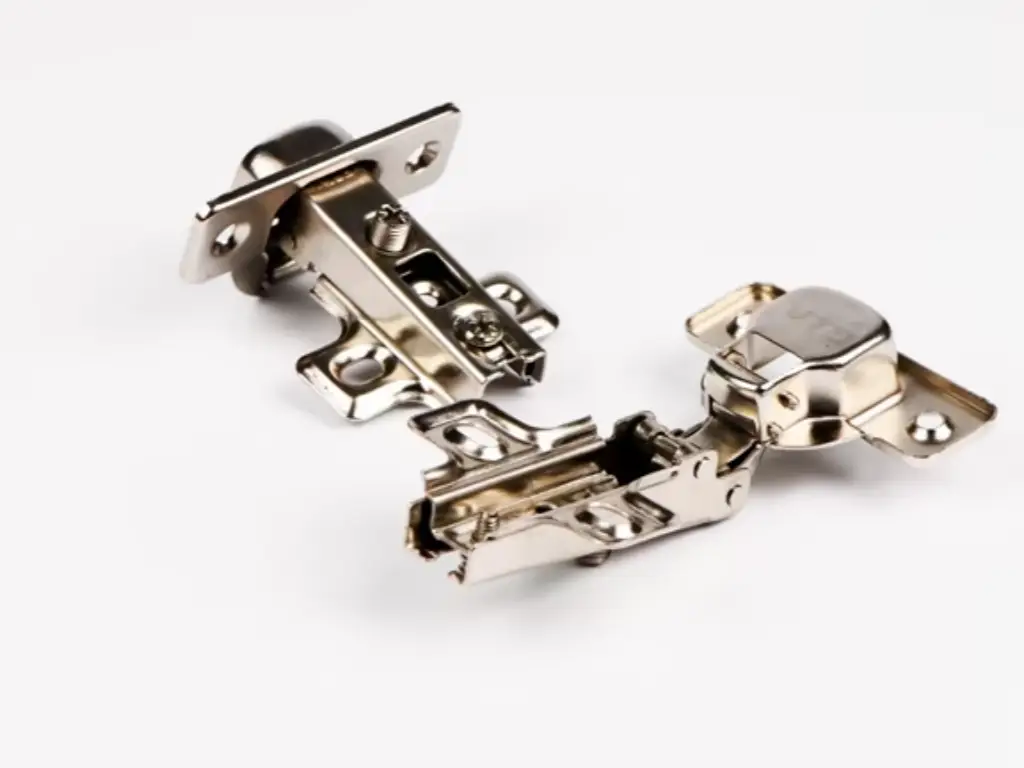
The Basic Parts of Concealed Hinges
In order to understand its function, one has to appreciate its parts. Although the designs differ radically between residential and industrial use, there are a few fundamental ideas that are common. A typical concealed hinge is a combination of three major parts that operate together:
- The Hinge Cup: This is the round cup, normally 35mm in diameter on standard furniture, that is fitted into a bored hole on the back of the door. The cup contains the central mechanical connection and is the point of attachment between the hinge mechanism and the door itself.
- The HingeArm: The arm is the connection that comes out of the cup and is joined to the mounting plate. The most important aspect of it is its geometry, since the shape and articulation of the arm determine the overlay (how the door covers the cabinet frame) and the extent of opening of the hinge.
- The Mounting Plate: This is the one that is attached to the interior wall of the cabinet or enclosure carcass. This plate has screw holes and the hinge arm clips or slides onto this plate to form the final connection. The mounting plate design is critical to adjustment, and may include screws that can be used to fine-tune the position of the door vertically (height adjustment), horizontally, and in depth (depth adjustment).
In industrial usage, the terms may be simpler, with the two halves being called leaves or bodies, and the central pin or a set of pivot points in a linkage. Whatever the terms, the principle is the same: a part on the door, a part on the frame, and a secret mechanism between the two.
Types of Concealed Hinges for Cabinets and Furniture Use
To cabinetmakers, woodworkers, and interior designers, the concealed cabinet hinge world is largely characterized by the position of the door relative to the cabinet frame, as well as the door size. This is called the overlay and is the most important consideration in the choice of the right hinge.
By Overlay: Full, Half, and Inset Explained
Full Overlay: This is the most popular use of contemporary, frameless cabinets. A full overlay hinge enables the cabinet door to fully overlay the front edge of the cabinet box that which it is attached. When you view a bank of cabinets with full overlay hinges, you are only looking at a continuous line of doors and drawer fronts with little space between them, giving a clean, monolithic appearance.
- Half Overlay (Partial Overlay): Half overlay hinge is a more specific solution. It is made to fit the case when two doors are hinged on different sides of one central partition. The doors overlap each other by half the thickness of the partition so that both doors can be used without interference with each other. This is typical of bedroom wardrobes or big kitchen pantry units.
- Inset: An inset hinge produces a more traditional, classic appearance. The door is not mounted on top of the cabinet frame but is mounted completely within the cabinet opening, flush with the front face of the cabinet box. This needs careful building, because the cracks around the door are completely exposed. Inset hinges are designed to swing the door up and out as it opens so that it clears the frame.
There are also specialty hinges that are used in special cases, like bi-fold hinges in corner cabinets, hinges that are made to fit a blind corner cabinet, and hinges that are made to fit the fragile nature of glass doors.
By Feature: Soft-Close, Self-Closing, and Free-Swing
In addition to the geometry of the overlay, two important characteristics determine the user experience:
- Soft-Close: This is a high-end feature that has a hydraulic damper or other mechanism built into the hinge arm. When the door is almost closed, the damper is activated, which slows the momentum of the door and enables it to close quietly and smoothly. This avoids slamming, minimizes wear and tear and gives a bit of elegance.
- Self-Closing: A self-closing hinge has a spring. The spring then comes into play and closes the door, making it latch, when the door is swung to within a few inches of being closed. It does not, however, regulate the speed of the closing, and may still make a noise on impact unless used with separate bumpers.
- Free-Swing: This is the simplest form of hinge operation. A free swing hinge does not contain a spring or a damping device. It can be moved and positioned freely and easily depending solely on the amount of force exerted by the user and will stay in the position it is left (depending on gravity). This type is frequently applied together with touch-latch systems (you push the door to open it) or where cost is a major factor and assisted closing is not a requirement.
The Industrial Call: When Standard Concealed Hinges Aren’t Enough
The laws of exact, hidden hinging do not apply only to wood and furniture. The stakes are much greater in the challenging industrial application world. In this case, we are no longer simply closing a cabinet door, we are locking down access to critical infrastructure, keeping sensitive electronics out of harsh environments, and keeping operators safe around heavy machinery.
A regular cabinet hinge is not only insufficient in such situations, but it is a liability. The forces involved, whether the sheer weight of a thick steel door or the vibration of a generator enclosure or the corrosive action of a coastal environment, require a totally different type of component. In this case, a hinge failure is not a nuisance, but a disaster. It may be a 200-pound steel door falling, a multi-million dollar control panel losing its seal to the elements, or a high-security enclosure being compromised. Here is where industrial grade concealed hinges come into play, designed not just to be pretty, but to work, to last, and to be stress-proof reliable.
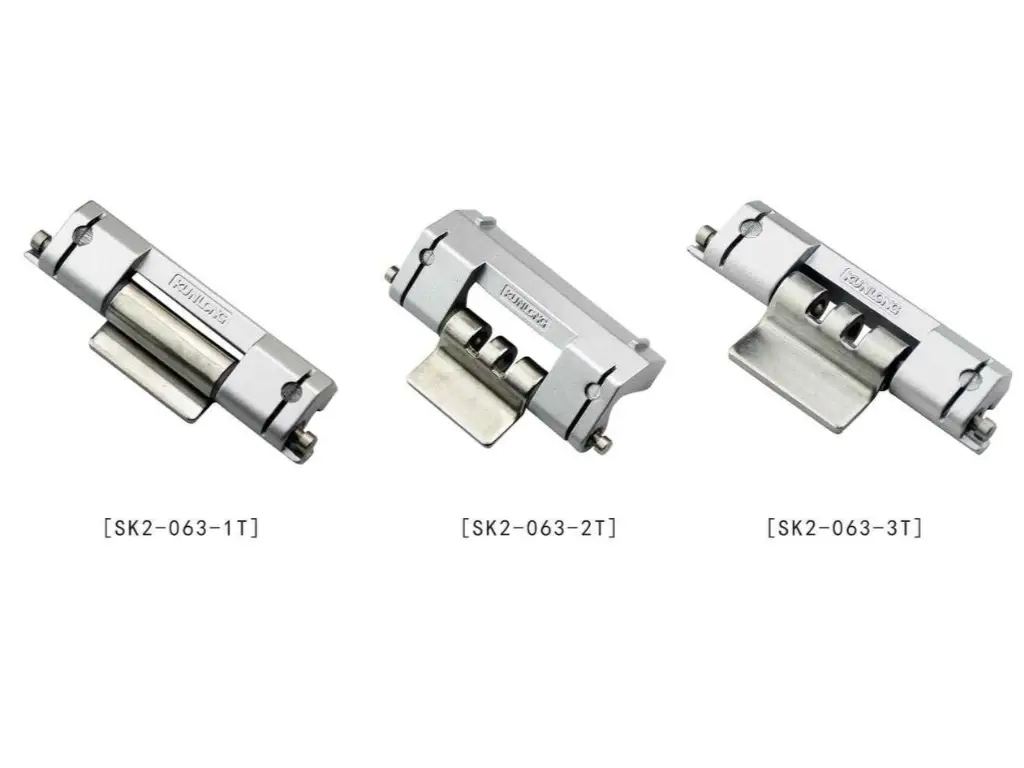
Types of Concealed Hinges for Industrial Use
Industrial concealed hinges are best understood not as a list of features, but as distinct product families defined by their core mechanical structure. Each structure is a solution engineered to solve a specific set of problems.
Multi-Link Concealed Hinges
These are probably the most advanced form of industrial hinge. A multi-link hinge has multiple arms (or links) that are interconnected and move along a complex, computer-designed kinematic path, as opposed to a single pivot point. Such a complex movement can be used to provide unusual solutions, like allowing a very thick, gasket-sealed door to pivot out and away from the frame then swing open, avoiding any binding or scrubbing of the seal. They tend to offer large opening angles (up to 180 degrees) and can be adjusted precisely in 3 axes once installed, and can distribute heavy loads over multiple points, making them suitable to large server racks, data center enclosures and precision machinery covers.
Weld-On/Bolt-On Hinges
This type of hinge is the solution when the main requirement is enormous strength and durability. They are also called block and pin hinges and are simple and sturdy in design. They are made up of two thick solid metal bodies (leaves or blocks) connected by a large diameter strong pin. Their main aim is to handle extreme loads. They are available in two primary mounting options:
- Weld-On: Weld-On is welded to the steel door and frame, producing a permanent bond that is as strong as the parent material. This is the final option of high-security and high-vibration use such as heavy-duty security doors, generator enclosures, and shipping containers.
- Bolt-On/Screw-On: These are heavy-duty versions, which are mounted with multiple bolts or screws, which have very high load capacity and the benefit of being serviceable or replaceable should there be a need, where the whole door can be removed to perform major maintenance.
Internal/Frame-Mounted Hinges
Internal hinges are used where the most secure applications and a totally smooth exterior are required. These hinges are made to fit completely inside the profiles of the door and frame and need a machined pocket (a mortise) to fit into. When the door is closed, they are totally invisible and inaccessible externally and have no pry points to be vandalized or to be entered by unauthorized persons. This renders them the default option in ATMs, ticketing kiosks, secure utility boxes, high-security enclosures, and high-end equipment where security and a clean appearance are of utmost importance.
How to Select the Right Concealed Hinge Type for Your Application
Choosing the correct hinge is a critical decision-making process that differs dramatically between a home project and an industrial specification.
Part 1: For Cabinets & Furniture
The procedure of choosing a cabinet hinge is a simple linear process.
- Step 1: Choose Your Overlay Type: The first step is to decide what you want to look like. Do you prefer the contemporary, smooth look of Full Overlay, the special purpose of Half Overlay, or the traditional, flush style of an Inset door? This is your main choice.
- Step 2: Measure Key Dimensions: After the overlay has been decided, measure the overlay distance needed (full or half overlay) or the thickness of the door and cabinet (inset). The size and weight of the door are also to be taken into account. This will dictate the number of hinges that are necessary to support it well-heavier or taller doors require more hinges. These will take you to the particular model of hinge and the proper mounting plate required to get the proper geometry.
- Step 3: Pick Your Features: Lastly, pick the preferred user experience. Would you prefer the silent elegance of a soft close hinge, the peace of mind of a self closing hinge or a free swinging one?
Part 2: For Industrial Applications
Selecting an industrial hinge is a multi-faceted engineering decision that follows a more strategic process.
- Step 1: Determine Your Core Structural Need: Before examining any particular hinge, you need to first determine the main issue that you are attempting to address.
- Strength & Durability: Is the primary challenge to withstand vibration, shock, or possible vandalism? This gives preference to strong designs such as Weld-On block hinges.
- Load Capacity & Door Dynamics: Do you have a heavy steel door to hang? Not only do you have to take into consideration the static weight (Load Capacity) but also the torque generated by the Door Dimensions. A heavy door, tall and narrow, imposes different strains on hinges than a heavy door, short and wide.
- Opening Angle & Access Requirements: What degree of opening is required? Is maintenance access essential and frequent? This gives preference to hinges that provide a 180-degree Opening Angle or even Lift-Off to remove the door entirely.
- Stealth & Security: Is the main objective to ensure that the enclosure is tamper proof with a spotless exterior? This leads straight to Internal/Frame-Mounted solutions.
- Step 2: Define Key Attributes: After determining the main need and probable structural type, you can specify the key attributes of the part.
- Mounting Type: Depending upon the strength, permanence, and serviceability requirements of your application, you will specify Weld-On, Screw-On, or Mortise-In.
- Material and Finish: What does it take to survive the operating environment? Will a dry indoor panel be adequate in zinc-plated Carbon Steel, or do you require the corrosion resistance of 304 or 316 Stainless Steel in an outdoor or washdown application?
- Functional Specifications: Does the hinge require any additional functionality other than pivoting, like an integrated grounding stud to provide electrical safety, a built-in door stop or the capability to be adjusted once installed?
- Step 3: Verify Against Standards & Certifications: Lastly, make sure that the component you have chosen fulfills all the project requirements.
- Protection & Safety Standards: Does the hinge have to support the overall IP rating (e.g., IP65 dust and water resistance) or NEMA rating of the enclosure?
- Certifications Required: Does the component have to be RoHS compliant to meet environmental regulations, or does your quality system require parts to be made by an ISO 9001 certified manufacturer?
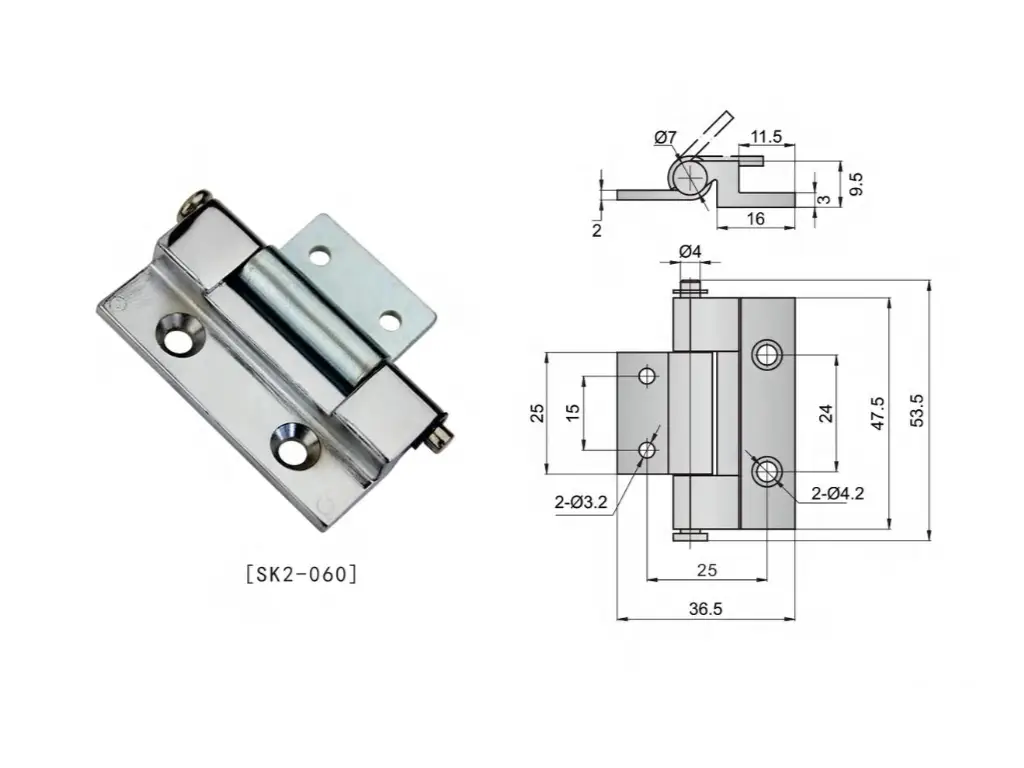
Why Partner with KUNLONG For your Concealed Hinges Needs?
The complexity of selecting industrial hinges makes the worth of a professional manufacturing partner all the more evident. A project that is successful needs more than a catalog part; it needs a solution supported by engineering knowledge and quality that can be depended upon.
KUNLONG is a leader in industrial hardware solutions in a unique position. We are guided by the following main pillars:
- Strict Quality Control: We enforce a 100% quality control system and each batch is subjected to 15 stringent tests of quality control starting with raw materials to finished products. We are able to produce tolerances of 0.0005mm with our precision engineering, which means that every part you get is as consistent and reliable as possible.
- Expert Customization: Our 30 experienced engineers (average 10 years of experience) have successfully developed more than 700 custom-function solutions. With ISO 9001, CE and CQC certifications, we transform your specific problems into tested, working hardware.
- Designed to withstand Extreme Conditions: We construct using SGS-tested, ROHS-certified materials to ensure maximum stability. Our hinges provide excellent corrosion resistance, passing 1000-hour salt spray tests- well above the industry standard, and provide specialized performance in high-load capacity, anti-vibration, and extreme temperatures (-70°C to 260°C).
- Faster Design and Special Service: Shorten your design cycle with instant 3D model downloads and free standard samples. Our team ensures that your technical feedback is responded to within 12 hours, giving you the expert support you require, at the time you require it.
Installation and Maintenance: Best Practices for Longevity
Proper installation and maintenance are crucial for ensuring a concealed hinge performs reliably throughout its lifespan.
| Category | Action | Details |
| Installation | Use Jigs | Ensure accurate positioning of mounting holes or weld points using jigs. |
| Follow Torque Specifications | Tighten fasteners to the specified torque values to avoid stripping threads or creating undue stress. | |
| Weld-On Hinges | Use appropriate welding techniques to ensure a strong bond without distorting the hinge or frame. | |
| Alignment | Ensure correct alignment in industrial settings to prevent uneven pressure on the gasket, which can compromise the IP rating and allow dust or water ingress. | |
| Maintenance | Periodic Inspections | Regularly inspect hinges for wear, corrosion, or loose fasteners. |
| Keep Hinges Clean | Clean hinges to prevent dirt and debris from accelerating wear. | |
| Lubricate Hinges | Lubricate pivot points on a regular schedule using high-quality industrial grease suitable for the environment, not simple spray oil. |
Conclusion
The path from the hidden hinge, the silent grace of a kitchen cabinet, to the uncompromising power of an industrial safety door is a tale of intentional design. It is an element that addresses one of the basic problems: how to give access without sacrificing integrity, whether integrity is aesthetic or structural. The selection of the numerous varieties of hinges is not a trivial matter, it is a basic choice that influences the aesthetic, functionality, safety and durability of the end product.
With a little knowledge of the different worlds of cabinet and industrial hinges, and a logical procedure of need identification, attribute specification, and standard verification, you can be sure that your selection is not only satisfactory, but the best. You are not simply choosing hardware; you are investing in a key element of the success of your design.

